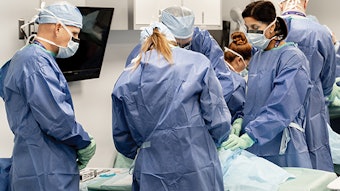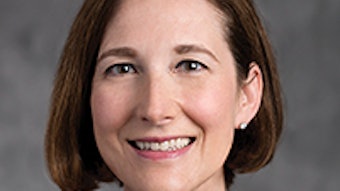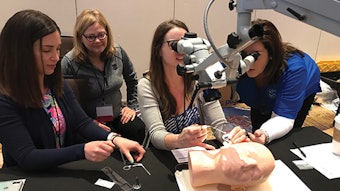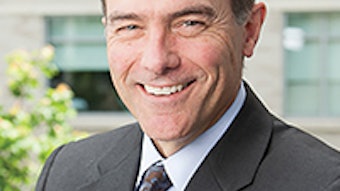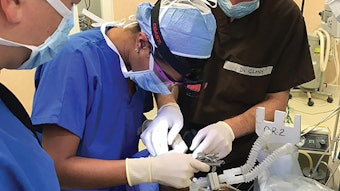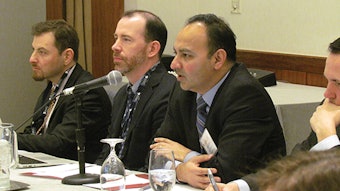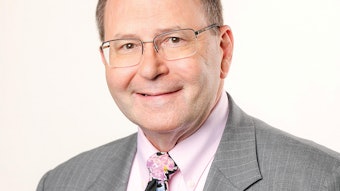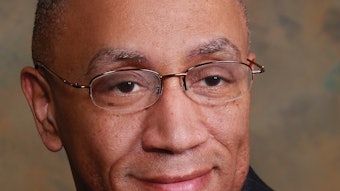Q&A for Patients
Contributors from the AAO-HNS Voice Committee: William Z. Gao, MD, Norman D. Hogikyan, MD, Sid Khosla, MD, Melissa M. Mortensen, MD, Amy L. Rutt, DO
Contributors from the AAO-HNS Voice Committee: William Z. Gao, MD, Norman D. Hogikyan, MD, Sid Khosla, MD, Melissa M. Mortensen, MD, Amy L. Rutt, DO

Q What are daily tips for keeping my voice healthy?
- Your vocal folds need to be well hydrated to function efficiently. Make sure you drink water (six to eight cups a day is the general recommendation). Alcohol, caffeine, and sugary drinks can dry out your voice box.
- If you speak a lot during the day, allow yourself times to be silent. For example, teachers may rest their voices during breaks and lunch.
- If you speak to large groups, try to use a microphone. This is applicable for teachers, clergy, some fitness instructors, and other speakers.
- Avoid yelling, screaming, and whispering.
- If your voice is getting tired, it is a sign that you are either using it too much or talking too loudly. Consider reducing loudness, taking voice breaks, or limiting the time you are talking.
- If you feel heartburn, consider eating earlier at night (at least four hours before bedtime); avoiding acidic foods, caffeine, and alcohol; and raising the head of your bed. If this does not work, seek medical attention.
- Humidify your home.
- Avoid throat clearing as much as possible. You can try swallowing or a sip of water. If you have allergies or heartburn, this can cause throat clearing; if it is not manageable, seek medical attention.

Voice-related Patient Information
Disorders that affect the ability to speak and swallow properly can have a tremendous impact on lives and livelihoods. ENT specialists treat sore throats, infections, gastroesophageal reflux disease (GERD), throat tumors, airway and vocal cord disorders, and more.
For more information, go to ENThealth.org.
Conditions & Treatments: https://www.enthealth.org/throat/
Get the Best ENT Care: https://www.enthealth.org/health_and_wellness_categories/throat/
Wellness & Prevention: https://www.enthealth.org/health_and_wellness_categories/health_and_wellness-throat/
Latest Research and Guidelines: https://www.enthealth.org/health_and_wellness_categories/throat-latest-research-guidelines/
Q I have had persistent problems with my voice and saw an ENT, but the scope exam was normal. Is there a more focused evaluation that I need?
This is an excellent question and it speaks to the importance of a subspecialty evaluation when there are persistent voice problems but no obvious cause is identified on initial evaluation. There are many possible etiologies for voice problems, with some being more apparent on initial exam than others. In particular, disorders of vocal function as opposed to disorders of structure may be more difficult to diagnose. The skills to critically assess a patient’s vocal capabilities beyond listening purely to habitual speaking voice can be essential to some diagnoses. Also, disorders that cause vocal fold mucosal stiffness typically require laryngeal videostroboscopy in order to understand the abnormal physiology. Consultation with a laryngologist and, if possible, particularly for occupational or professional voice users, an evaluation that includes both a laryngologist and voice-experienced speech pathologist will in most cases lead to accurate diagnosis and treatment of even the most challenging voice patient.
Q Having dealt with strangled voice breaks for years, I was finally diagnosed with spasmodic dysphonia. What is it, and will I ever talk normally again?
Spasmodic dysphonia (SD) belongs to a family of neurological disorders called dystonias. A dystonia is a movement disorder that causes muscles to contract and spasm involuntarily. SD can also be referred to as laryngeal dystonia. When a person with SD attempts to speak, involuntary spasms in the muscles of the larynx cause the voice to break, or sound strained, tight, strangled, breathy, or whispery. The spasms often interrupt the sound, squeezing the voice to nothing in the middle of a sentence, or dropping it to a whisper.
What causes spasmodic dysphonia is still unknown. Evidence suggests the basal ganglia in the brain is impacted in people with SD. Different treatments are available to alleviate or control the symptoms of the vocal spasms of SD on a temporary or long-lasting basis. Botulinum toxin injections have been used for the treatment of SD symptoms since the mid-1980s and are recognized as an effective treatment. Some voice disorders like SD have a neurological component, and an appointment with a neurologist that focuses on movement disorders will help determine if there are any neurological components present. Similar to other problems affecting the larynx, SD can be approached with a single type or a combination of treatments, as no single strategy will be appropriate for every case.
Q I am a singer and have been told I need voice surgery. Is it safe?
It is important as a singer that you are seeing a physician, such as a laryngologist, who utilizes videostroboscopy to assess the vibratory dynamics and vocal fold microarchitecture to determine if surgery is needed and would improve the current problem you are having with your singing. This technology can help determine the type of lesion present, whether nodules, polyp(s), cyst(s) or sulci. The type of lesion present really determines the outcome of surgery.
During the surgery itself, laryngologists now use tiny, tiny forceps that allow them to grasp a very specific part of the vocal cord and use scissors with blades measured in millimeters to remove only the lesion. The result is a tiny and very superficial removal of the lesion itself with minimal effect on the surrounding tissue. There is no incision for the majority of singers, although for certain uncommon disorders, like cysts or sulci, a tiny incision and dissection technique may be used.
There is the risk of general anesthesia and, despite use of a tooth guard, a slight risk of a roughened or even chipped upper central tooth. Taken together, these risks are extremely small. The real issue is that the precise degree of improvement cannot be guaranteed, even though the typical improvement is major for nodules and polyps. Risk is greater for surgery that involves an incision and dissection, like for a cyst or sulcus. The initial postoperative hoarseness will be longer, and the final result is not as good on average. It is still possible to get a wonderful result after incisional surgery but not as routinely as after nodule and polyp surgery.





